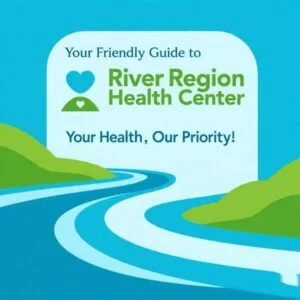Wondering “can substitute teachers get health insurance”? This friendly guide explains your options, from school districts to private plans. Get covered today!
Hey there! Thinking about becoming a substitute teacher? Or maybe you’re already jumping into different classrooms, helping out? It’s an awesome job – flexible, rewarding, and super important. But let’s talk about something super important for you: health insurance. That big question pops up: Can substitute teachers get health insurance?
It feels confusing, right? You’re not a full-time employee, but you’re definitely working hard! Let me tell you about my friend Megan. She loved subbing – the variety, the kids, the flexibility around her own family. But when she got a nasty cold that turned into bronchitis? Yikes. Paying for that doctor visit out-of-pocket really stung. It made her wonder, “Is there any way for someone like me to get decent health coverage?”
The short answer? Yes, substitute teachers can get health insurance! But it’s not always straightforward. Don’t worry, though! This guide will break it down super simply. We’ll explore the different paths to getting covered, the tricky parts, and some smart tips to make it happen. Let’s dive in!
Why Health Insurance Matters (Even for Super Subs!)

Okay, let’s be real. Health insurance isn’t the most exciting topic. But think about it like your classroom safety net. Remember that time little Timmy took a tumble off the monkey bars during your recess duty? (Hopefully not on your watch!). Accidents happen. So do surprise colds, allergies acting up, or needing a check-up.
Without insurance, a simple doctor visit can cost hundreds of dollars. An urgent care trip? Even more. A hospital stay? That could be financially devastating. Health insurance helps protect you from these huge, unexpected bills. It gives you peace of mind to focus on what you do best: rocking that classroom!
It’s not just about emergencies. Insurance helps you afford:
- Preventive Care: Yearly check-ups, vaccines, screenings. Catching things early is key!
- Prescriptions: Those medicines you need? Much cheaper with insurance.
- Managing Health Issues: Got asthma? Allergies? Diabetes? Insurance makes ongoing care affordable.
Think of it as investing in yourself. You take care of everyone else all day; you deserve to take care of you too!
So, How Can Substitute Teachers Get Health Insurance?

Here’s the breakdown of the main paths:
- Through Your School District (The Dream Scenario!):
This is the golden ticket, but it’s not super common. Some school districts offer health insurance benefits to their substitute teachers, especially if you work a lot of hours.- How it Might Work: The district might offer a plan if you work an average of 30+ hours per week over a set period (like a semester or school year). Sometimes, you pay the full premium; sometimes, they chip in a portion.
- The Catch: Requirements are usually strict. You need consistent, high-volume work in that specific district. If your hours dip, you might lose eligibility.
- Action Step: Ask! Seriously, contact the district’s HR department or check their substitute handbook. Don’t assume it’s not offered. Find out their exact rules. “Hi, I’m a substitute teacher here. Could you tell me if the district offers any health insurance options for subs, and what the requirements are?”
- Through a Substitute Staffing Agency:
Many districts use agencies to manage their subs. These agencies are your official employer. Because they employ many people, they might offer group health plans.- How it Might Work: Similar to districts, agencies often require you to work a minimum number of hours (e.g., 30+ per week) to qualify. You’d typically pay the employee portion of the premium.
- The Catch: Not all agencies offer it. Plans might be more expensive or have less coverage than big district plans. Eligibility depends on hitting those weekly hour targets consistently.
- Action Step: When signing up with an agency, ask directly: “Do you offer health insurance benefits for substitutes who meet certain hour requirements? What are those requirements and costs?” Get the details in writing.
- Buying Your Own Plan (The Marketplace & Beyond):
This is the most common path for subs. You buy insurance directly.- Health Insurance Marketplace (Healthcare.gov): This is often the best place to start! You fill out an application, see all available plans in your area, and find out if you qualify for financial help (subsidies) based on your income. Open Enrollment happens once a year (usually Nov-Jan), but losing other coverage (like aging off a parent’s plan) can trigger a Special Enrollment Period.
- Private Insurance Companies: You can also buy plans directly from insurers (like Blue Cross, Aetna, UnitedHealthcare) or through brokers. Compare carefully!
- Short-Term Health Plans: These are cheaper but offer VERY limited coverage (often skipping pre-existing conditions, maternity, prescriptions). Use with extreme caution – they’re not a good safety net.
- Action Step: Explore Healthcare.gov first! Use their plan comparison tools. Estimate your yearly income as best you can – this affects subsidies. Learn more about navigating health insurance options on your own (if you have one).
- Joining Professional Organizations (A Hidden Gem?):
Some national or state substitute teacher associations offer group health plans to their members.- How it Might Work: By joining the organization (paying a membership fee), you gain access to their group plan, which might be cheaper or offer better coverage than an individual plan.
- The Catch: Availability varies hugely. Not all organizations offer this. You still pay the full premium. Carefully compare the plan details and cost against Marketplace options.
- Action Step: Research substitute teacher associations in your state. Check their member benefits page specifically for health insurance offers. Compare, compare, compare!
- Other Options:
- Spouse or Partner’s Plan: If your spouse/partner has employer-sponsored insurance, joining their plan is often the simplest and most cost-effective solution.
- Medicaid: If your income is very low, you may qualify for free or low-cost coverage through Medicaid. Eligibility varies by state.
- Parent’s Plan (Under 26): If you’re under 26, you can usually stay on a parent’s health insurance plan.
The Big Hurdle: Minimum Hours & Consistency

This is the major challenge for most subs hoping for employer-based coverage (district or agency). What are the minimum hours to qualify for health insurance?
- It Varies Wildly: There’s no national rule. It’s entirely up to the employer (district or agency). Common thresholds are working an average of 30 or 35 hours per week over a specific “measurement period” (like 3-6 months).
- Why It’s Tough: Substitute teaching is inherently variable. Some weeks you’re booked solid. Other weeks (think holidays, testing periods, summer) you might get zero hours. Consistently hitting 30+ hours every single week for months is difficult for many subs.
- What It Means: Even if your district offers insurance, you might not qualify because your hours fluctuate too much. Always clarify the exact hour requirement and how it’s calculated.
Megan learned this the hard way. Her district offered insurance, but only to subs averaging 32+ hours/week over the semester. She worked tons in September and October, but November was slow, and December was basically a write-off. Her average dropped below the threshold. She didn’t qualify.
Making It Work: Tips for Getting Covered
Feeling a bit overwhelmed? Don’t be! Here’s your action plan:

- Ask the Obvious Questions: Don’t be shy! Ask your district HR and/or your staffing agency: “Do you offer health insurance for substitutes? What are the exact requirements (minimum hours per week, over what period)? What is the monthly cost?”
- Track Your Hours Religiously: Use a simple spreadsheet, planner, or app. Knowing your actual average hours is crucial to understanding if you might qualify for an employer plan.
- Explore Healthcare.gov FIRST: This is your best shot at finding an affordable plan, potentially with financial help. Go during Open Enrollment. Be honest about your expected income. Use their calculators.
- Compare ALL Options: Get quotes from the Marketplace, check association plans (if any), and compare against potential employer plans if you qualify. Look at premiums, deductibles, copays, and covered services.
- Consider a High-Deductible Plan (HDHP) with an HSA: If you’re generally healthy, these plans have lower monthly premiums. You can open a Health Savings Account (HSA) to save money tax-free for medical expenses. It takes discipline but can save money long-term.
- Budget for It: Treat health insurance like a necessary bill (because it is!). Factor the premium into your monthly substitute income planning. Check out our tips for managing finances as a substitute teacher.
- Don’t Go Uninsured! The financial risk of an accident or illness is just too high. Even a basic, high-deductible plan is better than nothing. It protects you from catastrophic costs.
Real Talk: The Pros and Cons of Subbing (Health Insurance Included!)
Substitute teaching is amazing, but it has its realities. Let’s balance the scales:
The Awesome Stuff (Pros):
- Super Flexible Schedule: You choose when you work! Need a day off? Take it.
- Variety: New school, new grade, new subject every day? Keeps things interesting!
- Making a Difference: You help kids keep learning when their teacher is out. That’s huge!
- Pathway to Full-Time: Great way to get experience and your foot in the door of a school.
- Less Take-Home Work: Usually no grading papers or lesson planning late into the night!
The Tricky Stuff (Cons – Including Insurance):
- Variable Income: Some months great, some months lean. Budgeting is key.
- No Guaranteed Hours: You might not get called every day you’re available.
- Benefits Can Be Scant: As we’ve seen, health insurance, retirement plans, paid time off are rarely offered or hard to qualify for.
- Starting Fresh Often: Walking into a new classroom dynamic daily takes energy and adaptability.
- Job Security: Work depends entirely on teacher absences and district needs.
Knowing these cons, especially about benefits, helps you plan smarter. It’s not a dealbreaker, just something to be aware of and prepare for!
Frequently Asked Questions (Substitute Teacher Health Insurance)

Q1: What benefits do subs usually get?
Sadly, traditional benefits like health insurance, paid sick leave, or retirement plans are rare for substitutes. You typically get paid per day or per hour worked. Some districts might offer minimal benefits like a 401(k) without matching, or very limited sick pay, but don’t count on it. Always ask your specific district or agency!
Q2: What are the disadvantages of being a substitute teacher?
The biggest downsides are the lack of benefits (like health insurance), unpredictable income and hours (some weeks slow, some busy), no paid time off, and constantly adapting to new classrooms and rules. You also usually don’t get paid for holidays or summer breaks unless you work summer school.
Q3: What are the minimum hours to qualify for health insurance (if offered)?
This varies completely by the employer (school district or staffing agency). There’s no standard. Common requirements are working an average of 30 or 35 hours per week over a set period (like a semester or 3-6 months). Consistency is key, which is hard with variable subbing work. Always ask for the specific rules where you work!
Q4: Can I get health insurance if I only sub part-time?
Getting insurance through a district or agency as a part-time sub is very unlikely due to minimum hour requirements. Your best bets are: 1) Buying your own plan on Healthcare.gov (you might get financial help!), 2) Joining a spouse/partner’s plan, 3) Checking if a professional association offers a plan, or 4) Exploring Medicaid if your income is low.
Q5: Is buying insurance on Healthcare.gov expensive?
It depends! Costs vary based on the plan you choose (like deductible level), your age, location, and tobacco use. The great news is you might qualify for government subsidies (tax credits) that significantly lower your monthly premium, especially if your income as a sub isn’t very high. Always apply to see if you get help! Visit Healthcare.gov to explore.
Q6: What should I do if I have a gap in coverage?
Try to avoid gaps! If you lose coverage (like aging off a parent’s plan), you usually get a 60-day Special Enrollment Period on Healthcare.gov. If you have a very short gap, you might pay out-of-pocket for urgent stuff and get coverage ASAP. Long gaps are risky – consider a short-term plan (knowing its limits) or see if you qualify for Medicaid.
Wrapping It Up: You Can Get Covered!
So, back to that big question: Can substitute teachers get health insurance? Absolutely YES! It might take a little more effort and research than a traditional full-time job, but it’s completely possible and incredibly important.
The key takeaways?
- Ask Your District/Agency: Never assume. Find out their specific policies.
- Healthcare.gov is Your Friend: This is the best starting point for most subs. Explore plans and see if you qualify for financial help.
- Hours Matter: Understand minimum requirements if employer-based coverage is a possibility.
- Compare Options: Look at Marketplace plans, spouse plans, associations, and potential employer plans.
- Budget for Health: Treat your premium like a necessary bill.
- Don’t Risk It: Having some coverage is always better than having none.
Being a substitute teacher is a vital and rewarding job. Taking care of your health is part of taking care of business! Don’t let the insurance question stress you out or hold you back. Do a little digging, explore your options (start with that Healthcare.gov click!), and find the plan that fits your life and your budget.
Ready to take control of your health coverage? Head over to Healthcare.gov today and see what plans are available in your area! You’ve got this!
Read More : Anchor Home Health Care: Your Friendly Guide to Great Care at Home













This was such a helpful read — thank you for sharing!